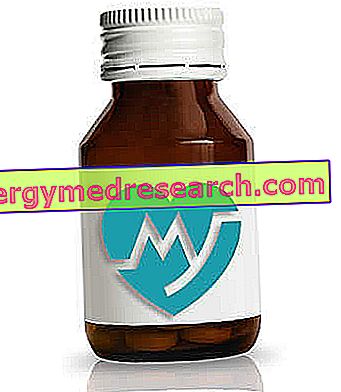PANADOL ® is a paracetamol based drug
THERAPEUTIC GROUP: Analgesics and antipyretic drugs
IndicationsAction mechanismStudies and clinical effectiveness Usage and dosage instructionsWarnings Pregnancy and lactationInteractionsContraindicationsUndesirable effects
Indications PANADOL ® Paracetamol
PANADOL ® is indicated for the symptomatic treatment of acute pain.
Mode of action PANADOL ® Paracetamol
Paracetamol, the active ingredient of PANADOL ®, is a drug with a strong analgesic activity, essentially mediated by the selective inhibition of cyclooxygenases.
Although the basic mechanism is the same as for non-steroidal anti-inflammatory drugs, paracetamol, also known as acetaminophen, does not yet find a stable location in a given therapeutic group, and in particular in that of NSAIDs, given its high selectivity of action .
In fact this active principle is able to:
- Selectively inhibit cyclooxygenases of peripheral nerve endings, reducing the production of mediators such as bradykinin responsible for the onset of the pain stimulus;
- Interfere with the conduction of the pain stimulus, slowing down the marrow-cortex association responsible for pain sensory processing;
- Increase the activation status of descending pathways involved in raising the pain threshold.
Despite as just described, the main application of paracetamol is the analgesic one, studies show how this active principle can also be responsible for a sensitive antipyretic action, reducing the production of prostaglandins such as PGE2 able to cross the blood-brain barrier and act on thermoregulatory centers hypothalamic.
In both cases, these therapeutic effects could be explained by a selective inhibition of paracetamol against specific cyclooxygenase neuronal isoforms.
Studies carried out and clinical efficacy
1. EFFICIENCY AND SAFETY OF PARACETAMOL
2012 Apr; 26 (2): 101-12.
Effective and gastrointestinal risk of aspirin used for the treatment of pain and cold.
McCarthy DM.
Extensive study that demonstrates how the use of paracetamol in the treatment of pain and fever can be effective, well tolerated and without any particular side effects.
2. PARACETAMOL IN SYRUP IN PEDIATRIC PRACTICE
2012; 66 (1): 5-8.
Pharmacokinetic work that demonstrates how the formulation of paracetamol in syrup can represent the best pharmaceutical form usable in the pediatric field, improving both the compliance and the safety of the drug.
3.OVERDOSE FROM PARACETAMOL AND CLINICAL CONSEQUENCES
Aliment Pharmacol Ther. 2012 Apr 23.
Case report that reports the high risk associated with paracetamol overdose, unfortunately still widespread in Europe and the US.
Among the most widespread side effects there would also be multi-organ dysfunction syndrome, in most cases fatal.
Method of use and dosage
PANADOL ®
500 mg coated tablets of paracetamol
Although the maximum safe dosage for paracetamol is that of 4000 mg daily, in adults it is recommended to take 1-2 tablets 3-4 times a day, preferably on a full stomach.
Warnings PANADOL ® Paracetamol
The use of PANADOL ® should be understood as short-term symptomatic therapy, useful for overcoming painful acute episodes.
The prolonged intake of paracetamol could easily determine hepatic and nephro-toxicity, contributing to the onset of even serious side effects in predisposed patients.
PANADOL ® -based therapy should not exceed 3 days of treatment, at the end of which in cases where no appreciable results are observed it would be appropriate to suspend therapy and consult your doctor.
PREGNANCY AND BREASTFEEDING
The various clinical studies carried out on the use of paracetamol in pregnancy, have not shown toxic and teratogenic effects on the fetus.
This could be explained by the high specificity of action of paracetamol on the neuronal isoforms of cyclooxygenases, thus avoiding a massive decrease in prostaglandins.
Despite this and despite the fact that paracetamol is not excreted in clinically relevant amounts in breast milk, the use of PANADOL ® in pregnancy and lactation should only take place under strict medical supervision.
Interactions
Although previously described paracetamol is not a non-steroidal anti-inflammatory drug proper, it is possible to superimpose its pharmacological interactions to those normally expected for NSAIDs.
Particular attention should be paid to the concomitant use of paracetamol and:
- Alcohol, due to increased liver toxicity of paracetamol;
- Oral anticoagulants and inhibitors of serotonin reuptake, due to the increased risk of bleeding;
- Diuretics, ACE inhibitors, angiotensin II antagonists, methotrexate and cyclosporin, given the ability to enhance the hepatotoxic and nephrotoxic effects of paracetamol;
- Active ingredients capable of altering gastric motility, capable of determining significant variations in the absorption of paracetamol;
- Antibiotics, due to the numerous variations in pharmacokinetic and pharmacodynamic properties;
- NSAIDs and opioids, due to the increased analgesic effect of their interaction.
Contraindications PANADOL ® Paracetamol
The use of PANADOL ® is contraindicated in case of hypersensitivity to the active ingredient or to one of its excipients, hepatic and renal insufficiency, high grade haemolytic anemia and glucose 6 phosphate dehydrogenase enzyme deficiency.
Undesirable effects - Side effects
The ability of paracetamol to inhibit the neuronal isoforms of cyclooxygenases with high selectivity allows to considerably limit the adverse reactions related to the antagonistic activity towards constitutively expressed isoforms.
For this reason it is possible to observe a low toxicity of paracetamol towards the gastro-enteric mucosa, while the prolonged use or in disproportionate doses could determine the appearance of hypersensitivity with urticaria, dyspnea, hypotension, angioedema and skin reactions, hepatotoxicity, nephrotoxicity, thrombocytopenia, leukopenia, neutropenia and very rarely coagulation disorders.
Note
PANADOL ® can be sold without a prescription



